Building trust and fostering engagement are critical challenges for small businesses in the digital age. With so much content vying for consumer attention, distinguishing your brand and cultivating a loyal customer base can be daunting. One powerful strategy to achieve this is through leveraging user-generated content (UGC). By encouraging and utilizing content created by your customers and followers, you not only enhance your brand’s credibility but also create a sense of community around your business. This article explores how small businesses can effectively harness UGC to build trust and engagement on social media.
What is User-Generated Content?
User-generated content refers to any content—text, videos, images, reviews, etc.—created by consumers rather than the brand itself. This content is often shared on social media platforms, review sites, and other online spaces where customers can voice their opinions and share their experiences. Unlike traditional marketing content, UGC is created organically, making it more authentic and relatable to potential customers.
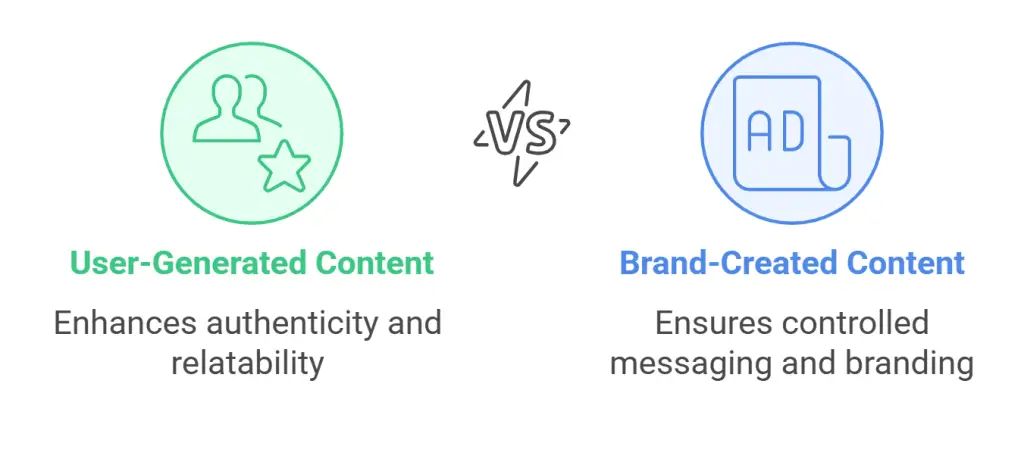
Why User-Generated Content Matters
UGC is valuable for several reasons:
- Authenticity: Consumers trust other consumers more than they trust brands. UGC serves as social proof, showing potential customers that others have had positive experiences with your business.
- Cost-Effective: Unlike paid advertisements or influencer marketing, UGC is essentially free. Customers create and share content out of their love for your brand, without you having to invest heavily in content creation.
- Engagement: UGC encourages interaction between your brand and its customers. When people see their content being shared or featured by a brand, it creates a sense of connection and loyalty.
- SEO Benefits: UGC can improve your website’s SEO, as fresh content and positive reviews can increase your visibility on search engines.
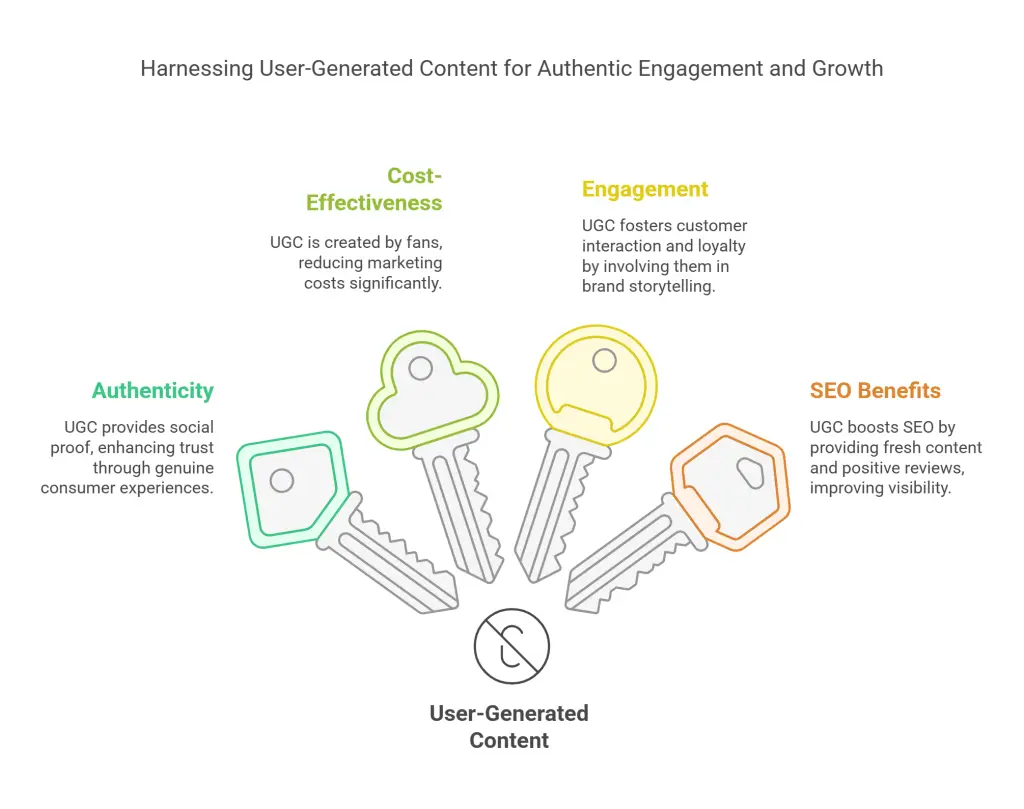
How to Encourage User-Generated Content
Encouraging your customers to create content for your brand requires a thoughtful approach. Here are some strategies that can help:
1. Create a Branded Hashtag
One of the simplest ways to encourage UGC is by creating a branded hashtag that your customers can use when they post about your products or services. This hashtag not only organizes the content for you but also encourages others to join in on the conversation.
Example: A local bakery could create a hashtag like #BakeWithUs for customers to share their own baking experiences using the bakery’s ingredients or recipes.
2. Host Contests and Giveaways
Contests and giveaways are effective ways to generate excitement and encourage participation. Ask your followers to post a photo or video using your product, tag your business, and use your branded hashtag. Offer a prize for the best submission, which adds an element of fun and competition.
Example: A fitness studio could host a contest where participants share videos of their home workouts using the studio’s online classes, with the best video winning a free month of classes.
3. Feature Customer Stories
Showcasing customer stories on your social media channels, website, or newsletters is another way to promote UGC. By highlighting how your products or services have positively impacted your customers, you not only validate their experiences but also inspire others to share their own stories.
Example: A boutique could feature customer testimonials and photos on their Instagram feed, sharing how their clothing has made customers feel confident and stylish.
4. Encourage Reviews and Testimonials
Online reviews and testimonials are powerful forms of UGC. Encourage your customers to leave reviews on platforms like Google, Yelp, or your business’s Facebook page. To make it easier, you can provide direct links to your review pages in follow-up emails or on your website.
Example: A small restaurant could ask satisfied customers to leave a review after their meal and offer a small discount on their next visit as a thank you.
5. Collaborate with Influencers and Micro-Influencers
While influencer marketing typically involves paid partnerships, collaborating with micro-influencers who already love your brand can generate authentic UGC. These individuals often have smaller but highly engaged followings and can create content that resonates with your target audience.
Example: A skincare brand might collaborate with local beauty bloggers who regularly post about skincare routines, asking them to review and share their honest opinions on the brand’s products.
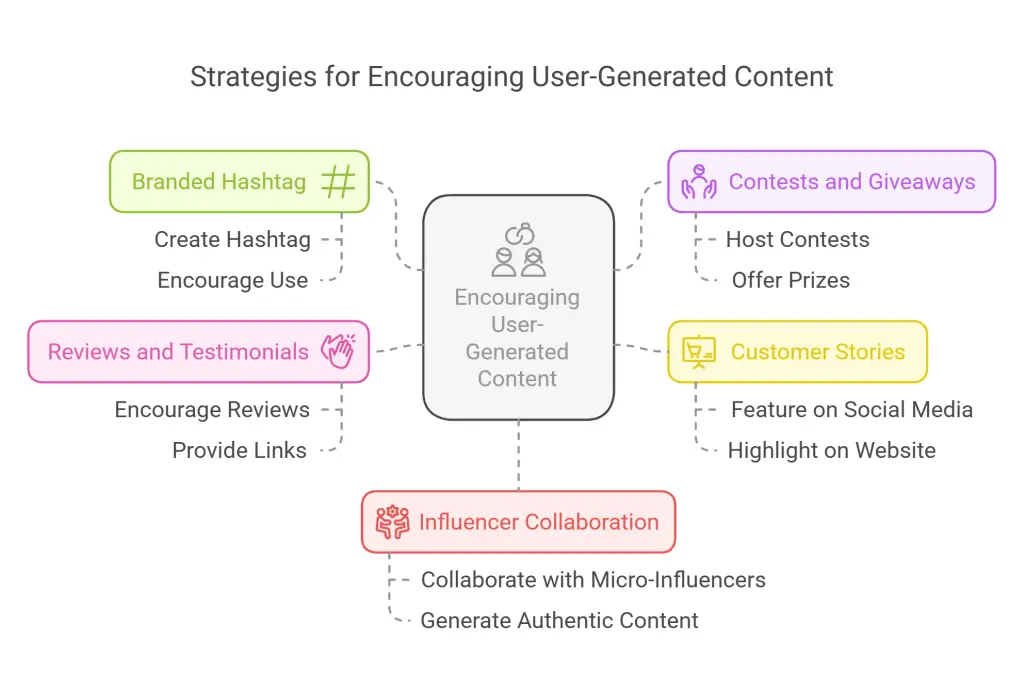
Example: The Story of “Petal & Vine”
To illustrate how small businesses can successfully leverage UGC, let’s explore the fictional story of “Petal & Vine,” a boutique florist shop in a quaint town.

Background: Petal & Vine, owned by Emma, was known for its beautifully floral arrangments. However, despite having a loyal customer base, the shop struggled to attract new customers and compete with larger florists in the area.
Challenge: Emma wanted to increase brand awareness and build a stronger connection with her customers but was constrained by a limited marketing budget.
Strategy: Emma decided to focus on leveraging UGC to build trust and engagement. She started by creating a branded hashtag, #BloomsByVine, encouraging customers to share photos of their flower arrangements on social media. To incentivize participation, she ran a monthly contest where the best photo won a free bouquet.
Emma also began featuring customer stories on the shop’s Instagram and Facebook pages, sharing how her arrangements had added a special touch to weddings, anniversaries, and other events. She asked satisfied customers to leave reviews on Google and offered a small discount on their next purchase as a thank you. Additionally, she collaborated with a local wedding planner, a micro-influencer, who shared photos of Petal & Vine’s arrangements at her events.
Outcome: Within a few months, Petal & Vine saw a significant increase in social media engagement and foot traffic in the shop. The #BloomsByVine hashtag gained popularity, with customers eagerly sharing their photos and tagging the shop. The customer stories resonated with followers, who appreciated the personal touch and authenticity of the content. The positive reviews on Google boosted the shop’s online presence, attracting new customers who were swayed by the glowing testimonials. The collaboration with the wedding planner also brought in new business, as brides-to-be saw Petal & Vine’s beautiful arrangements featured in real weddings.
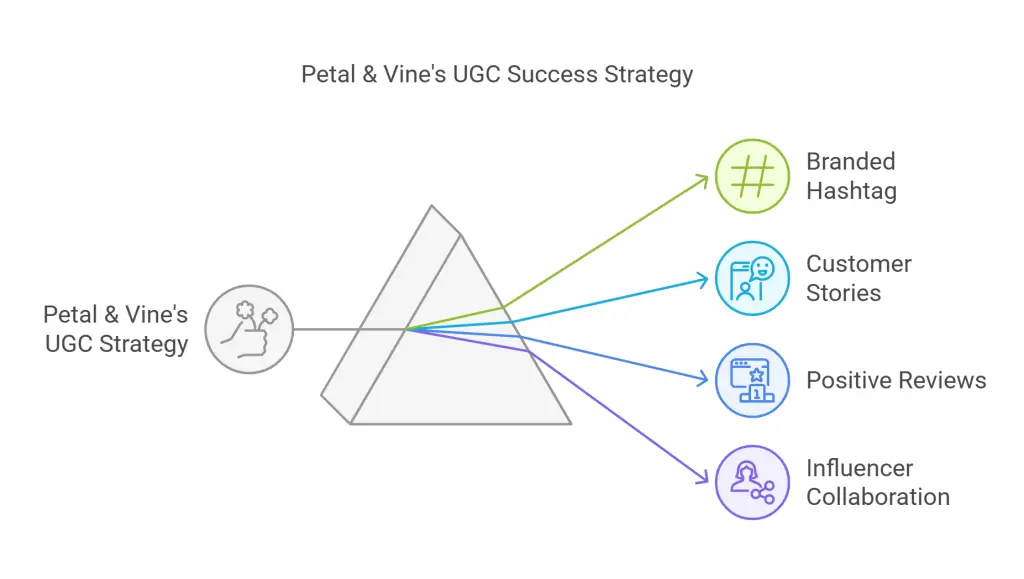
Conclusion: By focusing on UGC, Emma was able to build trust, foster a sense of community, and significantly increase her shop’s visibility—all without a large marketing budget. The strategy not only helped Petal & Vine thrive in a competitive market but also strengthened the relationship between the shop and its customers.
Overcoming Challenges with User-Generated Content
While UGC offers numerous benefits, it’s important to be aware of the potential challenges and how to overcome them.
1. Maintaining Brand Consistency
With UGC, you relinquish some control over the content associated with your brand. While this can be beneficial in terms of authenticity, it can also pose a risk to your brand’s image if the content doesn’t align with your values or aesthetics.
Solution: Clearly communicate your brand’s guidelines and values to your customers. You can gently guide UGC by providing examples of the types of content you’d like to see. For example, if your brand has a specific color palette, you can subtly encourage customers to incorporate those colors into their photos.
2. Managing Negative Content
Not all UGC will be positive. Customers might share negative experiences or feedback, which could potentially harm your brand’s reputation.
Solution: Respond to negative UGC with empathy and a willingness to resolve the issue. Addressing concerns publicly demonstrates that you value customer feedback and are committed to improving your business. This approach can turn a negative experience into a positive one, showing other customers that you care.
3. Legal Considerations
Using UGC comes with legal considerations, such as obtaining permission to share someone’s content and ensuring you’re not infringing on copyrights.
Solution: Always ask for permission before reposting someone’s content. You can do this by reaching out directly to the content creator or including a clause in your contest rules that allows you to use submissions in your marketing. Additionally, consider using tools that streamline the process of obtaining and managing rights to UGC.
4. Encouraging Consistent Participation
While you may see an initial surge in UGC when you first launch a campaign, keeping the momentum going can be challenging.
Solution: Regularly engage with your customers and continue to incentivize participation. You can do this by frequently running contests, featuring different types of UGC, or offering small rewards for contributions. Consistency is key to maintaining a steady flow of content.
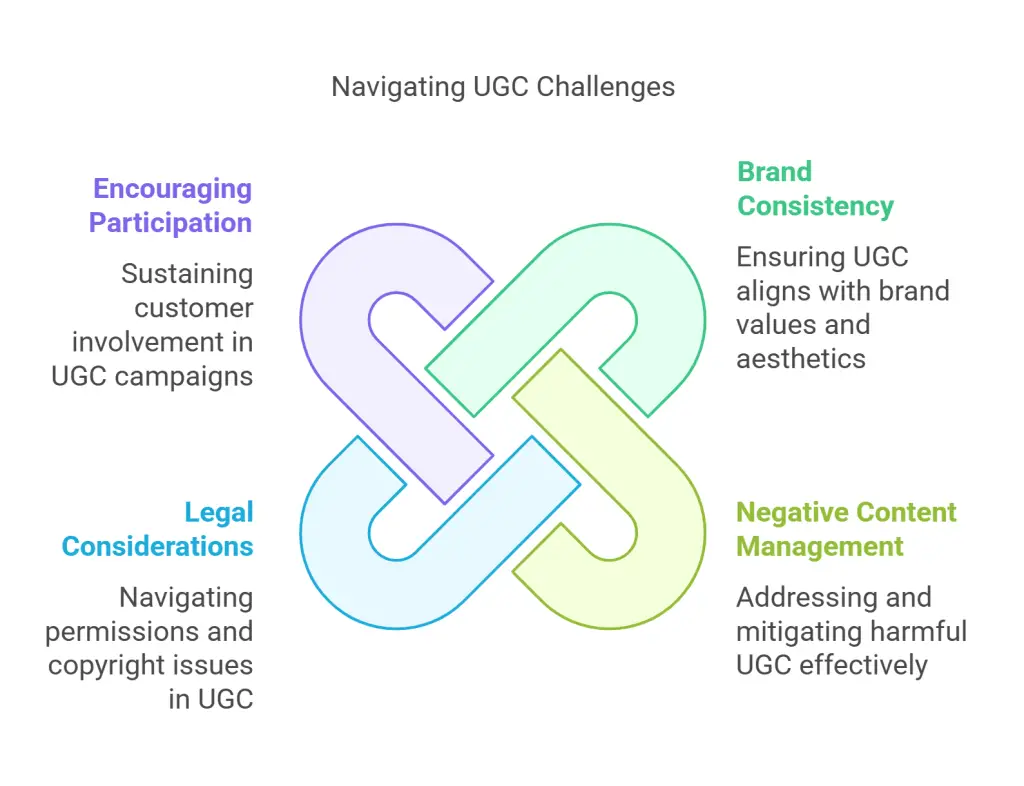
Best Practices for Leveraging UGC
To maximize the benefits of UGC, follow these best practices:
1. Engage with Your Audience
Don’t just passively collect UGC—actively engage with your customers. Like, comment on, and share their content. Show appreciation for their contributions, and let them know their content matters to your brand.
2. Showcase Diversity
Feature a wide range of UGC to showcase the diversity of your customer base. This approach not only broadens your brand’s appeal but also shows that you value all of your customers’ experiences.
3. Use UGC Across Multiple Channels
Don’t limit UGC to just one platform. Share it across your social media channels, website, email newsletters, and even in-store displays. This multi-channel approach maximizes the visibility and impact of the content.
4. Monitor and Measure Success
Track the performance of your UGC campaigns to understand what resonates with your audience. Use analytics tools to measure engagement, reach, and conversion rates. This data will help you refine your strategy and focus on the most effective types of UGC.
5. Keep It Authentic
Authenticity is the cornerstone of successful UGC. Encourage content that is genuine and reflects real customer experiences. Avoid overly curated or staged content, as this can undermine the trust you’re trying to build.
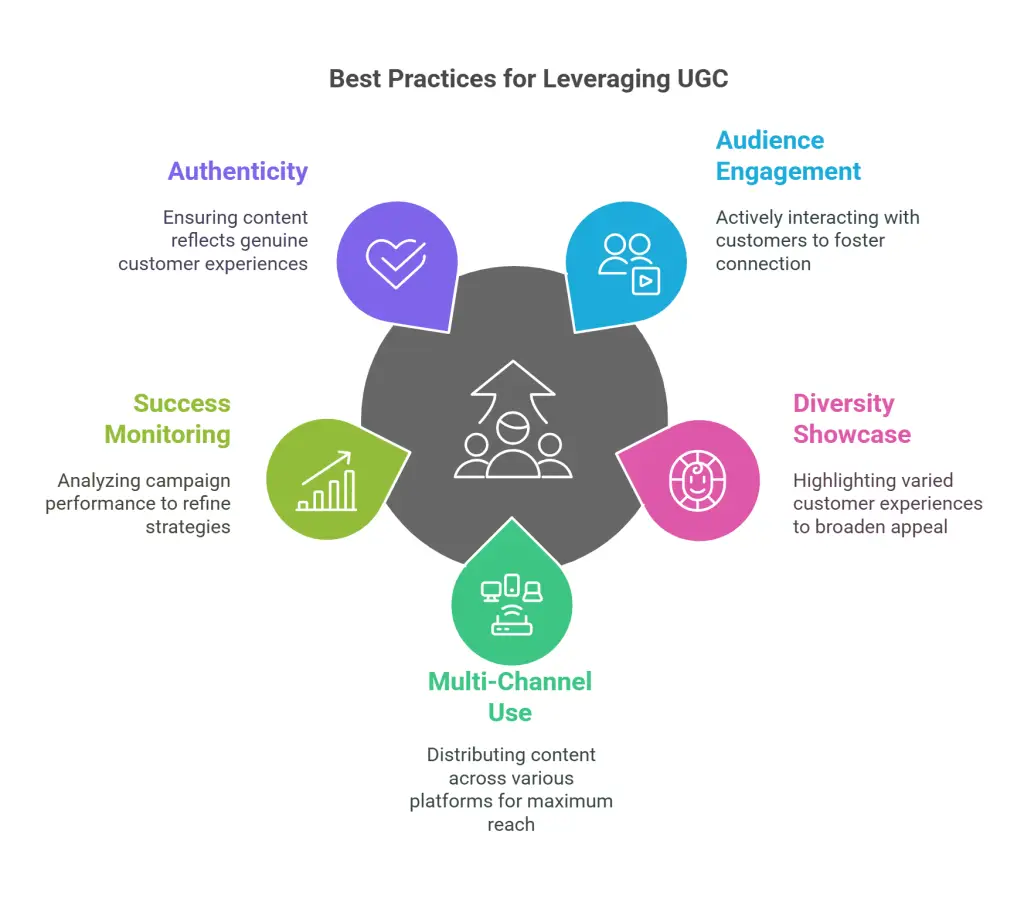
Conclusion
User-generated content is a powerful tool that small businesses can use to build trust, foster engagement, and enhance brand credibility. By encouraging your customers to share their experiences and actively engaging with their content, you create a community around your brand that is rooted in authenticity and mutual support. While there are challenges to managing UGC, the benefits far outweigh the risks when approached strategically.
Whether you’re a local boutique, a cozy cafe, or a budding online retailer, UGC offers a cost-effective and impactful way to connect with your audience and grow your business. By following the strategies and best practices outlined in this article, you can start leveraging UGC today to build a stronger, more engaged, and loyal customer base.
Further reading
Buffer. “What Is User-Generated Content?” Last accessed February 4, 2025. https://buffer.com/resources/what-is-user-generated-content/.
Hootsuite. “User-Generated Content (UGC): What It Is and How to Use It.” Last accessed February 4, 2025. https://blog.hootsuite.com/user-generated-content-ugc/.
Digital Marketing Institute. “How to Use User-Generated Content (UGC) with 4 Great Examples.” Last accessed February 4, 2025. https://digitalmarketinginstitute.com/blog/how-to-use-user-generated-content-ugc-with-4-great-examples.
American Marketing Association. “User-Generated Content.” Last accessed February 4, 2025. https://www.ama.org/marketing-news/user-generated-content/.
Instapage. “What Is User-Generated Content?” Last accessed February 4, 2025. https://instapage.com/blog/what-is-user-generated-content/.
Meltwater. “UGC: What Is User-Generated Content?” Last accessed February 4, 2025. https://www.meltwater.com/en/blog/ugc-user-generated-content.
Marketing Together. “User-Generated Content: A Complete Guide.” Last accessed February 4, 2025. https://marketingtogether.com.au/usergeneratedcontent/.
Clearscope. “How Long Does It Take to Rank in Google?” Last accessed February 4, 2025. https://www.clearscope.io/blog/how-long-does-it-take-to-rank-in-google.







